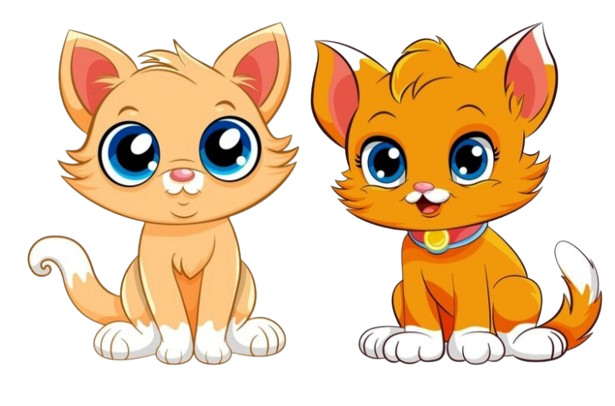Turkish Angora
Profile of
As their name suggests, the beautiful Turkish Angora comes
from Turkey, where it has always been highly valued. There are records of these
cats that date back to the 16th century. It was this breed of cats that
contributed to the development of the Persian cats.
At the beginning of the 20th century, the Angora cat was
almost extinct, but since the breed was considered a national treasure in
Turkey, a program for breeding Turkish angora was developed at the Ankara Zoo.
During the 1950s, U.S. service members spotted these
beautiful cats while visiting the Ankara Zoo, but it wasn't until the early
sixties that the zoo allowed the American colonel's wife, Lisa Grant, to
purchase a pair of individuals that were later brought to the U.S.
The Cat Fanciers Association registered this breed only in 1968 and took part in the Cat Championship in 1972. In 1979, the Angora breed received champion status in the International Felinological Association.
Characteristics
of the Cats
Are Turkish Angora cats good pets?
Turkish angora breeders:
Attachment to the
family 10/10
Gaming
activity 10/10
intelligence 10/10
General
health 06/10
Wool
fallout 05/10
Friendliness to
children 08/10
Friendly to dogs 10/10
Love of meows 07/10
Breed
Information of Cats
|
Country of origin |
Turkey |
|
Lifetime |
15-18 years |
|
Size |
average |
|
Weight |
Cats: 4-6 kg, Cats: 3-5 kg |
|
Coat type |
longhair |
|
Color |
any colors and patterns of wool |
|
Lifestyle |
outdoors / indoors |
|
Price |
600-800 $ |
How much does a Turkish Angora kitten cost?
Are Turkish Angora cats expensive?
what is the Description of the
Is a Turkish Angora cat rare?
The Turkish Angora is a beautiful cat that boasts a very
long and delicate-to-the-touch coat. They are well-balanced cats, and when they
move, they do so gracefully.
The Turkish Angora has a small head, the eyes are large in
the shape of a walnut. Cats always have a kind, open expression in their eyes,
which adds to their attractive appearance. The eyes can be any color and do not
necessarily have to match the color of the cat's coat. Their ears are wider at
the base, large, and also slightly pointed at the tips.
The Turkish angora also stands out for its long, slender body.
They have long elegant legs, the rear ones are slightly longer than the front
ones. The paws are oval in shape and small, in proportion to the cat's legs.
Angora cats weigh from 5 to 6 kg and cats from 7 to 8 kg.
They can live 15-18 years.
What is the personality of the
The Turkish Angora is a very active, agile, and assertive
cat. She is very curious, so from the first day in the house, she will be
interested in everything you do, while offering her help every step of the way.
Her quick wit and energetic nature can make her a great choice for families
with children, just make sure that children do not pull her hair and tail, as
well as for everyone else, including the elderly.
Turkish angora loves interactive games, and she will be very
bored if you do not pay her due attention. In order for the cat to train its
body and its hunting instinct, provide it with toys that it can hunt for, as
well as all sorts of cat climbs that the cat can climb. She really likes to be
on top.
Try not to give this cat the opportunity to learn bad
habits. Once she learns something, then it will be difficult to retrain her.
Turkish Angoras tend to allow other pets in their household,
provided they recognize who really "rules the house." She will rule
over dogs and other cats with an iron paw.
Turkish Angora is considered to be one of the real pearls of
the cat world.
what are the common
diseases in
The Turkish Angora is a natural breed and is therefore
considered generally healthy. However, there are hereditary diseases that you
should pay attention to if you plan to get yourself a pet.
Diseases are as follows:
- hypertrophic cardiomyopathy;
- deafness.
How to take care of
The Turkish Angora has a very long and silky coat. However,
it does not require much care because its coat rarely has any barbs. Brushing
your cat twice a week is all to keep the coat in perfect condition.
Turkish Angoras love the attention that is given to them, so
the care process will be simple for the owner. You can have water treatments
every couple of months, especially if your pet is white or light in color. It's
also important to check your ears regularly and clean them if necessary.








